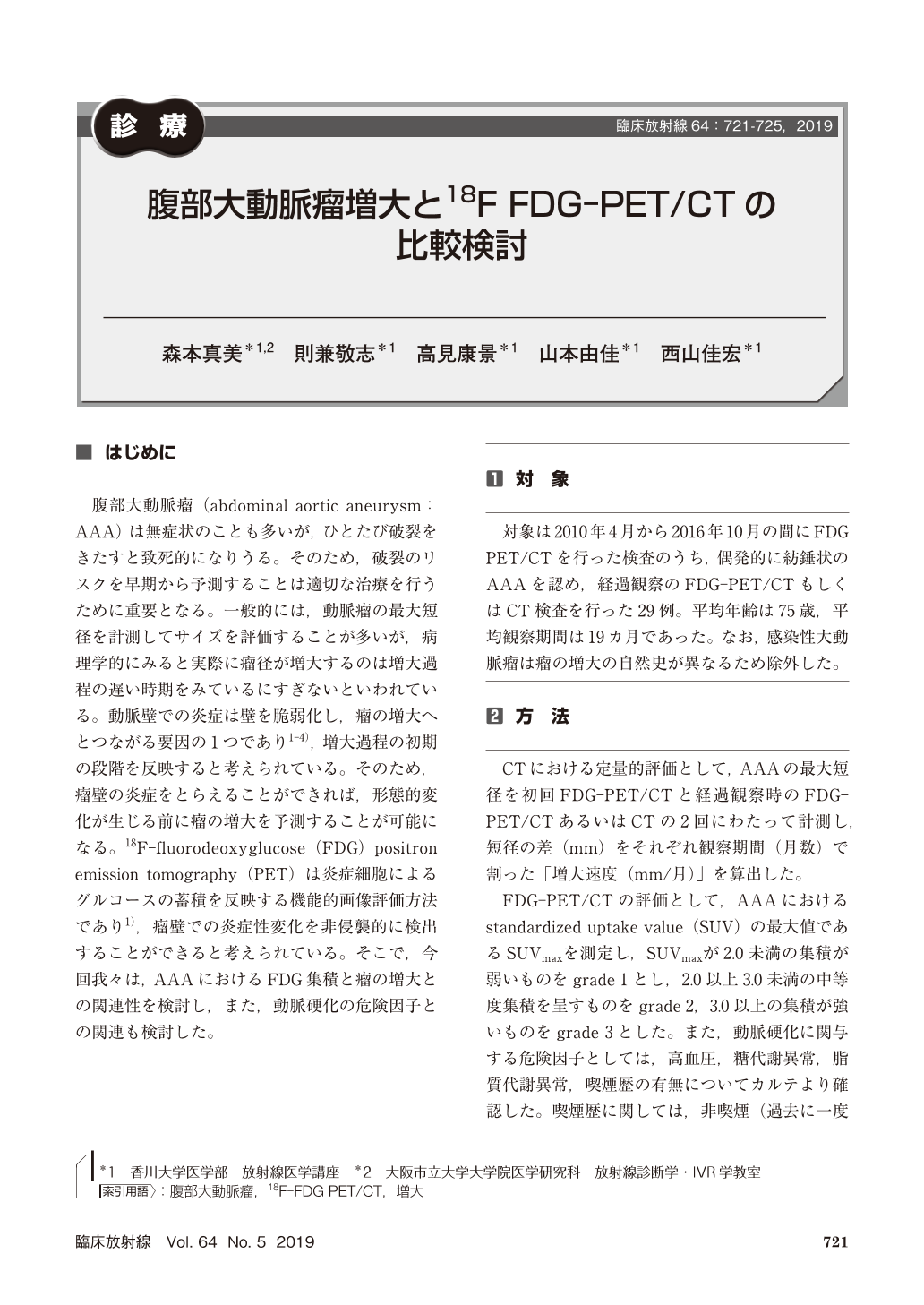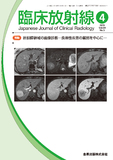Japanese
English
- 有料閲覧
- Abstract 文献概要
- 1ページ目 Look Inside
- 参考文献 Reference
腹部大動脈瘤(abdominal aortic aneurysm:AAA)は無症状のことも多いが,ひとたび破裂をきたすと致死的になりうる。そのため,破裂のリスクを早期から予測することは適切な治療を行うために重要となる。一般的には,動脈瘤の最大短径を計測してサイズを評価することが多いが,病理学的にみると実際に瘤径が増大するのは増大過程の遅い時期をみているにすぎないといわれている。動脈壁での炎症は壁を脆弱化し,瘤の増大へとつながる要因の1つであり1-4),増大過程の初期の段階を反映すると考えられている。そのため,瘤壁の炎症をとらえることができれば,形態的変化が生じる前に瘤の増大を予測することが可能になる。18F-fluorodeoxyglucose(FDG)positron emission tomography(PET)は炎症細胞によるグルコースの蓄積を反映する機能的画像評価方法であり1),瘤壁での炎症性変化を非侵襲的に検出することができると考えられている。そこで,今回我々は,AAAにおけるFDG集積と瘤の増大との関連性を検討し,また,動脈硬化の危険因子との関連も検討した。
The aim of this study was to evaluate the relationship between abdominal aortic aneurysm(AAA)growth and 18F-fluorodeoxyglucose positron emission tomography/computed tomography findings and atherosclerosis risks. Twenty-nine patients with fusiform type AAA were examined. Correlations were analyzed between growth rate and the maximal standardized uptake value(SUVmax)and risk factors(hypertension, diabetes mellitus, hyperlipidemia, and smoking). AAA growth was only positively related with hypertension. No significant relation was observed between AAA growth and SUVmax, or other risk factors.

Copyright © 2019, KANEHARA SHUPPAN Co.LTD. All rights reserved.


